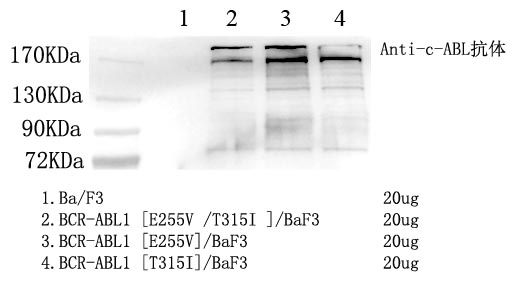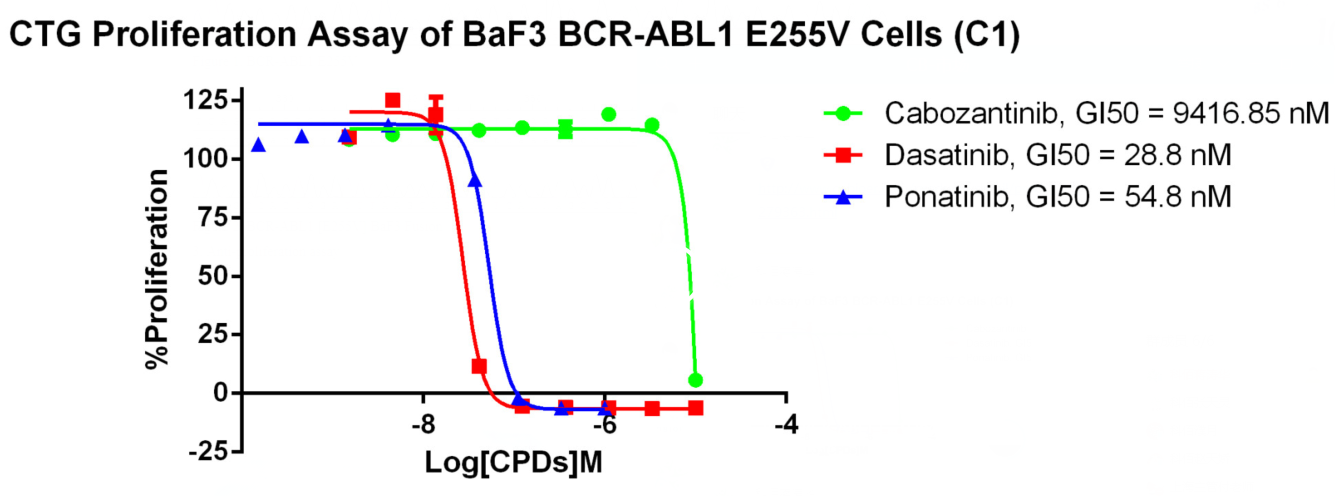BCR-ABL1 [E255V]/BaF3
CBP73288
| I. Introduction | |
|
Cell Line Name: |
BCR-ABL1 [E255V]/BaF3 |
|
Host Cell: |
Ba/F3 |
| Stability: | 16 passages (in-house test, that not means the cell line will be instable beyond the passages we tested.) |
|
Application: |
Anti-proliferation assay and PD assay |
|
Freeze Medium: |
90% FBS+10% DMSO |
|
Complete Culture Medium: |
RPMI-1640+10%FBS |
|
Mycoplasma Status: |
Negative |
| II. Background | |
|
Presence of a BCR-ABL1 fusion gene is necessary for the pathogenesis of CML. In up to 95% of cases, a t(9;22) (q34;q11) translocation results in the BCR-ABL1 fusion gene (Faderl et al. 1999). This translocation results in the Philadephia chromosome. In rare CML cases lacking the traditional t(9;22) translocation, other translocations result in the creation of the BCR-ABL1 fusion gene, which sometimes involve multiple chromosomes. |
|
| III. Representative Data | |
|
1. WB of BCR-ABL1 [E255V]/BaF3
|
|
|
2.Sanger of BCR-ABL1 [E255V]/BaF3
Figure 2. BCR-ABL1 E255V
Figure 3. BCR-ABL1 [E255V]/BaF3 Fusion |
|
|
3. Anti-proliferation assay
Figure 4. CTG Proliferation Assay of BaF3 BCR-ABL1 E255V Cells (C1). |
|






